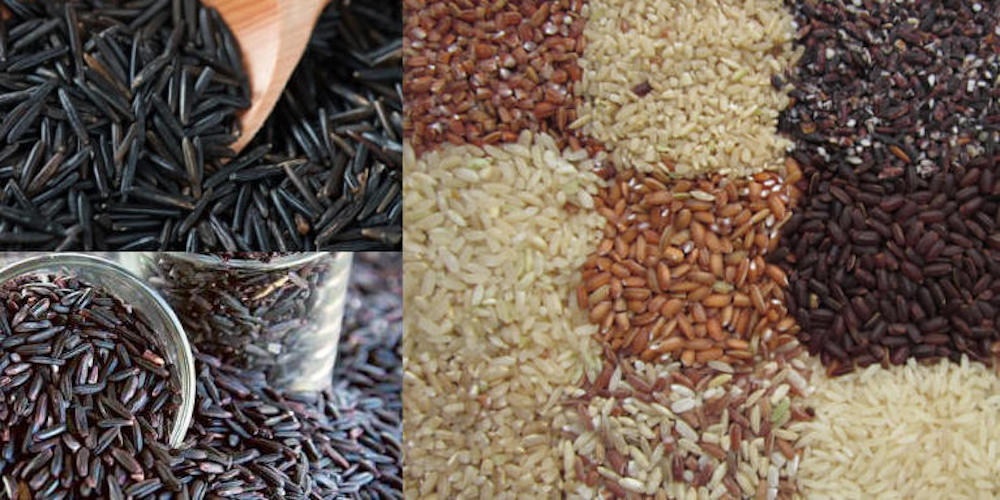Promoting Indigenous Varieties of Rice

Indigenous varieties of rice are being promoted through varieties programmes in the country by the Government of India.
As many as 574 indigenous varieties of rice have been propagated and tested at more than 10,000 farmers’ fields, involving state agricultural universities, KVKs (Krishi Vikas Kendra) and NGOs through a project entitled “Mainstreaming Agricultural biodiversity conservation and utilization of the agriculture sector to ensure ecosystem services and reduce vulnerability”.
Nutritional profiling of 300 selected rice varieties has been done for market linkage and better price to the farmers. Farmers are also being trained on conservation, improvement and use of traditional/ indigenous varieties through participatory variety selection.
Further, for access to seeds of these indigenous varieties, community seed banks have been established at community level involving KVKs and Self Help Groups in remote and tribal areas of the country and a total of 26 community seed banks conserving 4000 native landraces and farmers’ varieties of different food crops including rice have been strengthened and established.
Communities and farmers conserving and promoting indigenous rice varieties have been conferred with Genome Savour awards by Protection of Plant Varieties Protection and Farmers’ Rights Authority (PPV&FRA) and following awards have been given since 2009-10:
(a) Plant Genome Saviour Community Award (Rs. 10 lakh each ): 13
(b) Plant Genome Saviour Farmer Rewards (Rs. 1.5 lakhs each): 12
(c) Plant Genome Saviour Farmer Recognitions (Rs. 1.0 lakh each): 19
Rice varieties are also being promoted under National Food Security Mission in 193 districts of 24 states and Union Territory.
Similarly, “Bringing Green Revolution to Eastern India (BGREI)” a sub scheme of Rashtriya Krishi Vikas Yojana is implemented in seven Eastern States viz., Assam, Bihar, Chhattisgarh, Jharkhand, Odisha, Eastern Uttar Pradesh and West Bengal to address the constraints limiting the productivity of “rice based cropping systems” in Eastern India.
Five rice varieties viz., Lalat and Improved Lalat (GI value: 54) as low GI and Swarna, Sambha Mahsuri and Shaktiman (GI value <60) as intermediate GI have been identified and all these varieties are in seed chain and are being cultivated by the farmers.
There is no certification for GI (Glycemic Index) in rice.
The details of indigenous rice varieties/ germplasm listed are as under:
Total rice germplasm conserved at National Gene Bank: 1,09,834 including traditional varieties (6,707), land races (38400) and varieties released and notified (1190).
Varieties registered with PPV & FRA: Total 2047 varieties have been registered which include 1645 farmers varieties.
Rice was first cultivated in China, from where it came to northern India and Bengal, and eventually, reached the southern states.
It may be noted here that one of the earliest records of Indian agriculture and rice in particular comes from the Greek philosopher Theophrastus, who travelled to India with Alexander. He described Indian rice as a grain similar to the Emmer wheat he knew (long grained “Khapli” wheat). In those times, rice was as valued for its medicinal properties, as it was for being a source of income.
The first two types of rice grown in India were Sali and Vrihi.
Some ancient verities of Indian rice are:
Sali, Vrihi, Maha-Sali
The Sali rice cultivar was harvested in the winter. Vrihi, on the other hand, was an ordinary variety of rice that was harvested in autumn. A third, more sophisticated variety was the Maha-Sali, which was a longer grain and had more fragrance. This has been identified with present day Basmati.
Sali is a term that is still used today in many dialects to refer to rice in general.
Ambe Mohor
Ambe Mohor, literally meaning the inflorescence of the mango, is an incredibly fragrant short grain rice typical to Maharashtra, where it is relished cooked soft with a drizzle of ghee and metkoot or in the various spiced rice preparations.
Gobindobhog
Similar but slightly daintier than the Ambe Mohor is the Gobindobhog, the rice of Payesh in Bengal and the proud bearer of a geographical identification tag.
Chak-Hao
Black rice was once called “forbidden rice” in China not because it looked unusual but because it had such high nutrient value that it was only reserved for the consumption of royalty. Today, black rice is vastly domesticated in North East India, Bengal, Jharkhand, and Odisha, and is treasured for its medicinal properties.
Commonly known as Chak-hao, it also forms the centre of Manipuri celebratory feasts. Medical research has shown that Chak-hao is an effective remedy for inflammation and helps in protecting the body from cancer.
Matta
Matta rice, the fat, red-streaked separate grains of rice that become the carrier of the plethora of accompaniments on a Sadhya meal is the indigenous parboiled rice of Kerala and is distinct from brown rice. Brown rice is simply any variety of rice with the husk on.
Sikandar
This relatively newer variety of rice is grown in a small radius in Maharashtra and central India, and is usually available in a semi-polished state with part of the skin on. A complex carbohydrate, this rice has a distinct nutty aroma and works very well in a simple Khichdi or as a rice gruel.
Patni
Patni is a Maharashtrian variety of rice. This radiant red hued rice has almost all of the outer skin intact, which imparts an unusual crunchy texture to the rice.
Indrani
The main factor that differentiates Indrani from Sikander is that it is a slightly longer grained rice. It is a tad stickier than Sikander and is arguably even more aromatic and earthy in flavour.



